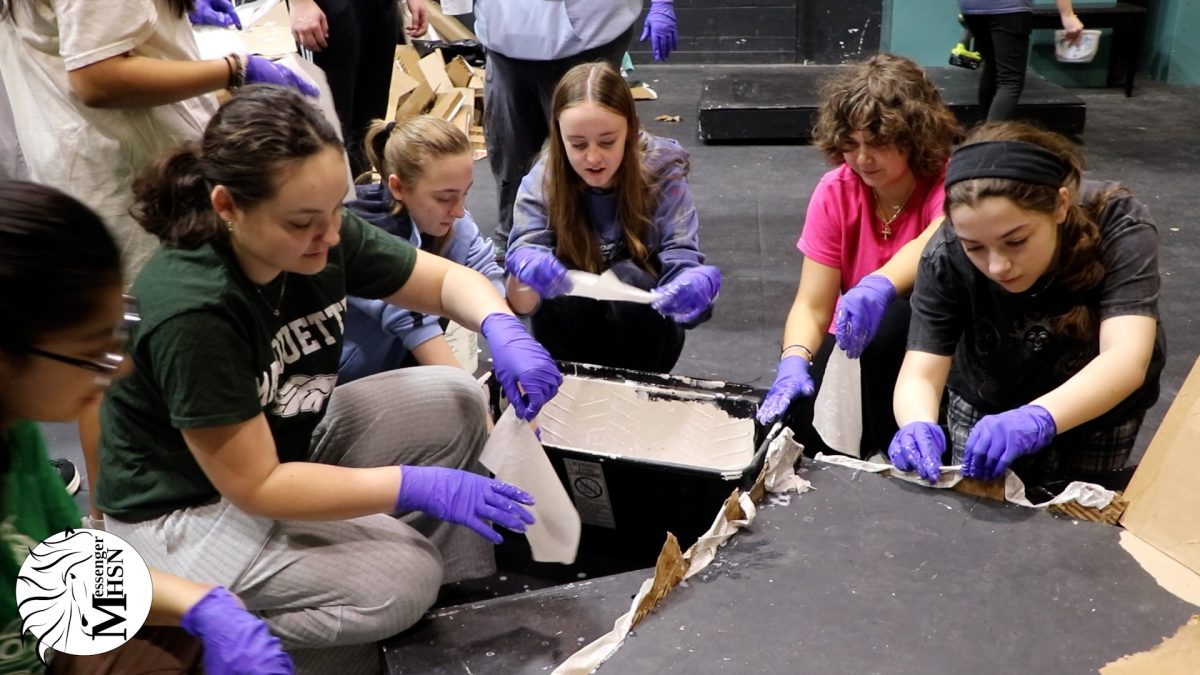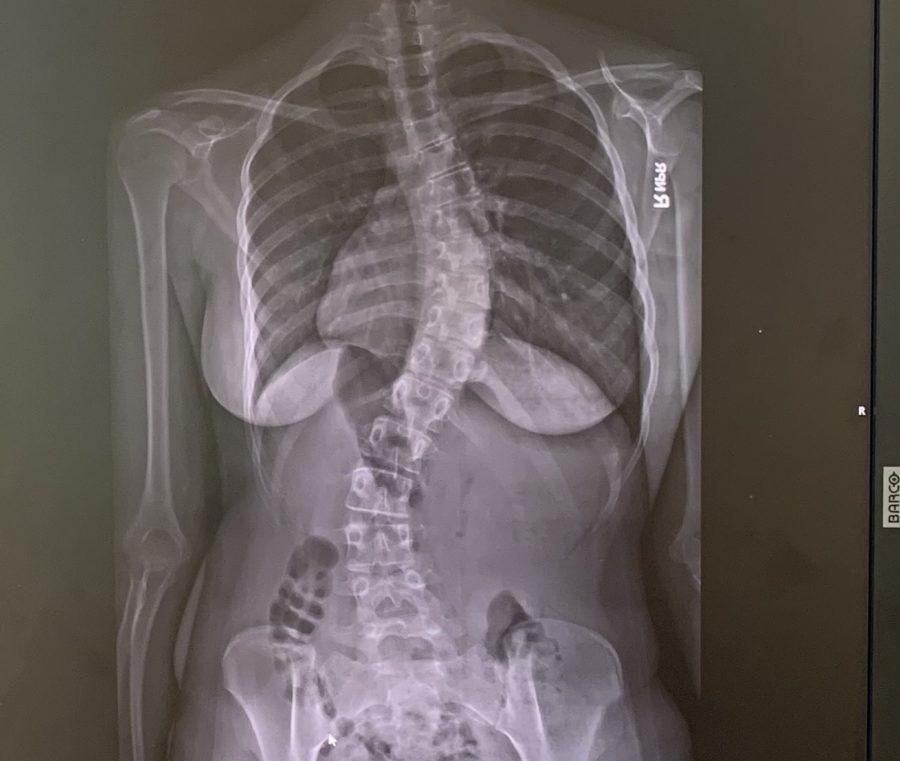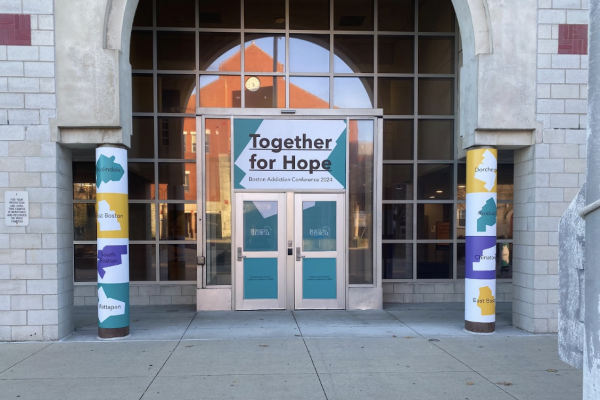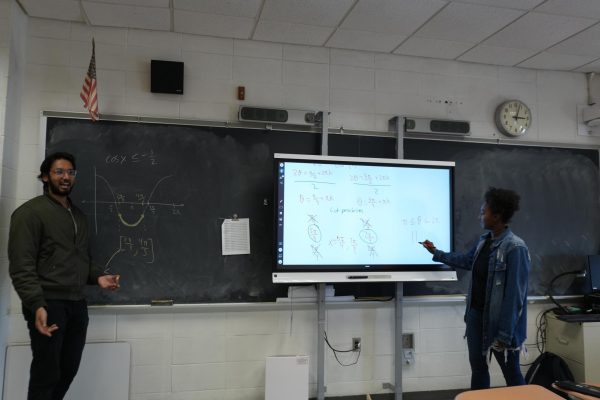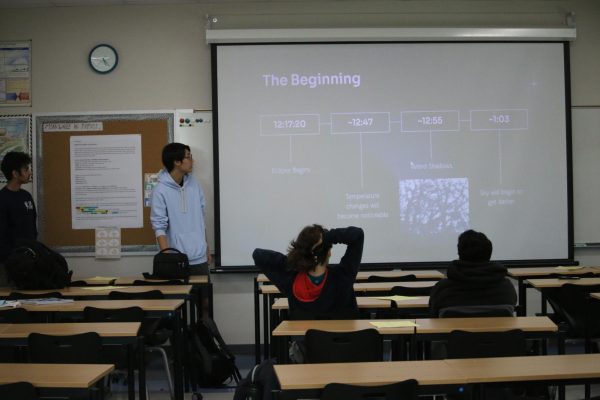Bending the perception of scoliosis
Scoliosis is a condition marked by an abnormal curvature in the spine.
March 8, 2022
On a seemingly normal day in middle school, students were pulled out of class and asked to bend over while a tool was run down their backs. They were checked for what seemed like an unimportant matter for the majority of students, but for those given a diagnosis, that typical day can become transformative.
Adolescent Idiopathic Scoliosis
Idiopathic scoliosis, more commonly known as scoliosis, is a spine condition indicated by a sideways curvature of the spine of more than 10 degrees.
Although scoliosis is a particularly common condition that usually does not require treatment, it can call for crucial measures if it reaches a certain degree. Treatments like physical therapy, a brace, or, if necessary, surgery are all options those with moderate to severe scoliosis have to consider.
The condition is usually indicated by symptoms of low back pain, mid back pain, and a general feeling of tightness of the muscles near the thoracic spine, according to Dr. Ryan Hamilton, a doctor of chiropractic who specializes in sports medicine.
“Most patients with scoliosis are female, and it begins around adolescence. This is why we would get checked in middle school physical education for it,” Hamilton said.
Hamilton treats scoliosis mainly for palliative care (decreasing pain), including spinal manipulation and myofascial techniques. These techniques help treat skeletal muscle immobility and pain by relaxing contracted muscles. Some of the techniques include the Active Release Technique and Graston Technique.
Different stages of scoliosis call for various treatments. If a patient with a scoliosis complaint is an adolescent or younger, an orthopedist must determine whether to take action if bracing or surgery is needed. If a patient with scoliosis is an adult, no additional steps need to be taken.
In adults, scoliosis is unlikely to progress or develop a worse curve. Adults can usually maintain their spines with exercise and physical therapy.
“Patients who are the most active usually have the best outcomes. Whether that is sports, weight training, or general fitness, exercise seems to slow the process for some scoliosis patients and help speed the recovery process if surgery is needed,” Hamilton said.
Patients who are the most active usually have the best outcomes. Whether that is sports, weight training, or general fitness, exercise seems to slow the process for some scoliosis patients and help speed the recovery process if surgery is needed.
— Dr. Ryan Hamilton
With pediatric and adolescent patients, there become different options for them to take depending on the degree of the curve.
For adolescents, scoliosis can easily worsen. When bones are growing quickly in young patients, the curvature in their spines can increase by 20 to 25 degrees in a year. When the curve is small, usually patients consider the Schroth Method, which implements strengthening exercises to try and limit the worsening of a curve and possibly decrease it.
When a curve is between 25 and 45 degrees, brace treatment is usually applied. A common misconception about bracing is that it causes the curve to decrease. Instead, it stops the curve from progressing until the patient has stopped growing. Improving a curve can only be done by getting surgery. Even so, wearing a brace is effective in keeping a curve relatively manageable.
Curves that ultimately become 50 degrees or greater may make adolescent patients candidates for surgery. Surgery is done to stop curve progression, stabilize the spine, and correct scoliosis as much as possible. Fusion surgery is typically performed where metal rods and other implants are used to correct and immobilize the spine’s shape.
Curve Degrees by Noelle Erslovas
Curves that ultimately become 50 degrees or greater may make adolescent patients candidates for surgery. Surgery is done to stop curve progression, stabilize the spine, and correct scoliosis as much as possible. Fusion surgery is typically performed where metal rods and other implants are used to correct and immobilize the spine’s shape.
This kind of surgery has been used for decades and has a lot of research supporting its success and safety. Even today, new advancements and research for scoliosis treatments are being performed.
“I think the hardest challenge for younger people with scoliosis is the sense of uncertainty, and not having control over whether the curve will progress with time,” says Dr. Edward Sun, MD, Board-Certified Orthopedic Spine Surgeon.
Sun helps adolescent patients with treatments for scoliosis outside of surgery. Along with this, he also performs surgeries to help treat scoliosis, mainly for adults.
Throughout the years, changes have been seen in treatments of scoliosis. Sun, himself, has seen a couple during his career.
“We have much better evidence now that brace treatment works, and can minimize the need for surgery for many patients with progressive scoliosis,” Sun said. “Although some patients still require surgery despite bracing, the surgical technique has also improved, with better surgical implants, so a hard brace is usually not needed after surgery.”
Emma Elliot swims on despite her scoliosis
Competing in a high school sport is challenging in itself, but being diagnosed with a serious condition after an injury adds a whole other layer of complications.
Emma Elliott, a senior on the swim team, was diagnosed with scoliosis before the start of her sophomore year. Prior to the end of her freshman year, an issue occurred while running for physical education (PE); something had moved out of place in her lower back.
“I knew something was wrong with my back, but out of stubbornness and a hope that it would get better over time, I thought it was some other problem. I didn’t know I actually had scoliosis,” Elliot said.
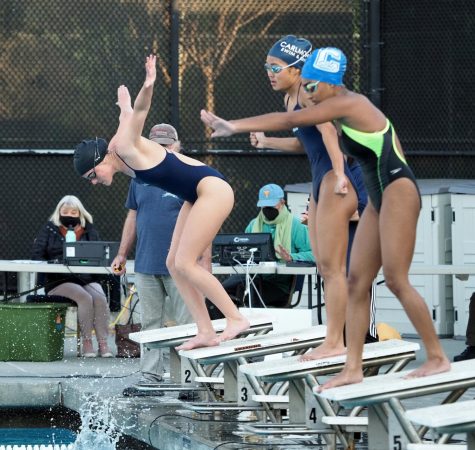
After the initial injury, the pain was a significant factor in Elliot’s routine, and it didn’t seem to improve. The pain was emotionally draining and made it difficult for Elliot to complete simple tasks.
“It got to a point where I wouldn’t even get up out of bed in the morning, and I couldn’t carry my backpack or put on my shoes without severe pain. What’s worse was that I couldn’t swim for a few months because of the pain I was in,” Elliot said.
After barely being able to swim, treatment with a chiropractor was arranged, which slightly helped Elliot’s pain. The summer after her freshman year, another shift occurred during swim practice, this time in her upper back. This shift called for a trip back to the chiropractor.
“I finally went back to the chiropractor after being fed up with the pain, and they told me I had scoliosis. I started crying because I didn’t want it to affect my swimming,” Elliot said.
Despite visits to chiropractors in attempts to alleviate the pain, Elliot was still suffering.
“I thought that if I went to the chiropractor enough, things would get better over time. I was wrong,” Elliot said.
Changes were finally made to allow Elliot to get back to swimming and everyday activities. Physical therapy, a change in sleeping position, and strength training were what ultimately helped Elliot. All these factors got rid of her pain and strengthened her back muscles. She learned this through some of her research and help from her dad.
I thought that if I went to the chiropractor enough, things would get better over time. I was wrong
— Emma Elliot
“I am really careful now with the way I sleep. If I sleep in the wrong position, I’m in more pain than usual the next day,” Elliot said.
Elliot learned a calculated sleeping position through a lot of trial and error. This and consistent strength training have helped Elliot incredibly as she can now excel in her swimming without pain holding her back.
Now, Elliot understands her scoliosis more than ever and can determine the severity of her issues when she has pain.
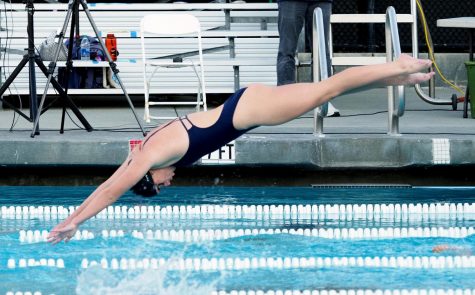
“I think I have a better sense of my body and how it’s feeling. I know the difference between my back being sore from a workout or sore because something is wrong,”
Elliot feels optimistic about the future because as she gains strength, her back pain decreases. Although there are worries about it getting worse, she is confident that that won’t be the case through consistent training.
Michelle Meskin overcomes the challenges of surgery
Surgery is a worrying matter that young athletes, students, or anyone hope never to have to experience. It takes a strong person to not only get through the procedure but also endure the long recovery process. One such person was Michelle Meskin.
After being diagnosed with scoliosis at the age of 14 and reaching a curve of about 40 degrees, Meskin was on the verge of severe scoliosis. At this point of the condition, it affected her in all aspects.
“Physically, I was always in pain and had to constantly move around because that was what felt best to me. Mentally I thought I wasn’t going to get better, and the constant pain and annoyance always put me in a bad mood,” Meskin said.
Meskin was told she needed surgery and was on the operating table just two months later. At first, she was against having surgery because of the rushed situation and the feeling of being forced into it.
“I was scared things could go wrong or that I would regret doing it. I am glad I went through with it. Although I do still have pain sometimes, I know that my scoliosis is prevented from coming back. Looking back on it, I realized how strong I was for going through a major surgery at 15. Lots of people wouldn’t have been able to do that,” Meskin said.
The options were to either get surgery in December 2020 or June 2021. After much thought, Meskin decided that December was the perfect time to get surgery because online school and limited junior varsity cheer practices would allow Meskin time to recover without missing many in-person experiences.
Although rushed with little time to think it over, Meskin felt it was for the better. Before getting surgery, Meskin had to undergo blood tests and X-rays to check for good health and get a clear idea of what the surgery would do. In the days leading up to the surgery, Meskin felt many emotions.
“A few days before my surgery, I started having really bad anxiety attacks because it was such a serious surgery, and lots of things could have gone wrong. But on the day of surgery, I was really calm,” Meskin said.
On Dec. 21, 2020, Meskin woke up at 5 a.m. and went to the Stanford Children’s hospital surgery center. After signing in and being talked through the procedure, she met with her surgeon and anesthesiologist. Finally, after being given an IV and saying goodbye to her parents, she got rolled off to the surgery room.
“Everyone was so sweet and made me feel so comfortable. When I was in the actual operation room, they put a mask over me to breathe in the air to make me fall asleep. I was out in about four breaths,” Meskin said.
I was scared things could go wrong, or that I would regret doing it. I am glad I went through with it. Looking back on it, I realized how strong I was for going through a major surgery at 15.
— Michelle Meskin
Seven hours later, Meskin woke up in the recovery center and felt groggy and thirsty.
“I ended up drinking a lot of water right away, which you aren’t supposed to do, so I ended up throwing up over ten times that night,” Meskin said.
Typically, patients started walking that first night, but nurses decided to wait until the next day because of Meskin’s sickness. After three days in the hospital, which mainly consisted of sleeping, watching Disney movies, and beginning to walk around, Meskin left the hospital.
Many aspects of Meskin’s life were difficult post-surgery. Unfortunately, less than a week after her surgery, Meskin faced a passing in her family. Because she couldn’t travel anywhere because of her recovery, this took an emotional toll on her.
“I had already gone through so much that me not being able to go just felt like another wound,” Meskin said.
These were some of the most challenging months she had ever endured. Besides mental health, surgery also affected Meskin’s physical health as well. Her scar and other factors caused Meskin’s self-esteem to fall. Not liking how her scar looked in clothing as well as getting dirty looks from people in public when they saw her back were hardships that Meskin persevered through.
“I overcame these challenges and realized that I was so brave for going through that painful time. That scar was a memory of overcoming those hardships, so now I proudly show off my scar,” Meskin said.
Being on the cheer team was also affected because of surgery. After a five-month recovery break, Meskin returned. Physically, she was limited to only participating in cheers without being able to dance or stunt yet.
Other factors such as peers undermining Meskin’s pain or stating that she wasn’t trying hard enough challenged her.
“Having people saying those things to me made me realize that even if you explain what you went through, some people will never understand what you have gone through, and that’s okay. You know what you’ve gone through. Other people’s opinions are irrelevant to how you feel,” Meskin said.
Having people saying those things to me made me realize that even if you explain what you went through, some people will never understand what you have gone through, and that’s okay. You know what you’ve gone through. Other people’s opinions are irrelevant to how you feel. — Michelle Meskin
Although a very long and grueling process, Meskin has pushed through 11 months post-surgery and has recovered considerably. She will never forget this process for its impact and reminder of the strength and bravery she had to get through it.
“To people who are about to have this surgery, I would say be ready for the low moments of your life, times where you can’t do anything without help, being unable to do what your friends can, and even being in a bad space mentally. You will forever be grateful for being strong enough to go through something so major it will make you feel like you can do anything,” Meskin said.
This story was originally published on Scot Scoop News on March 4, 2022.



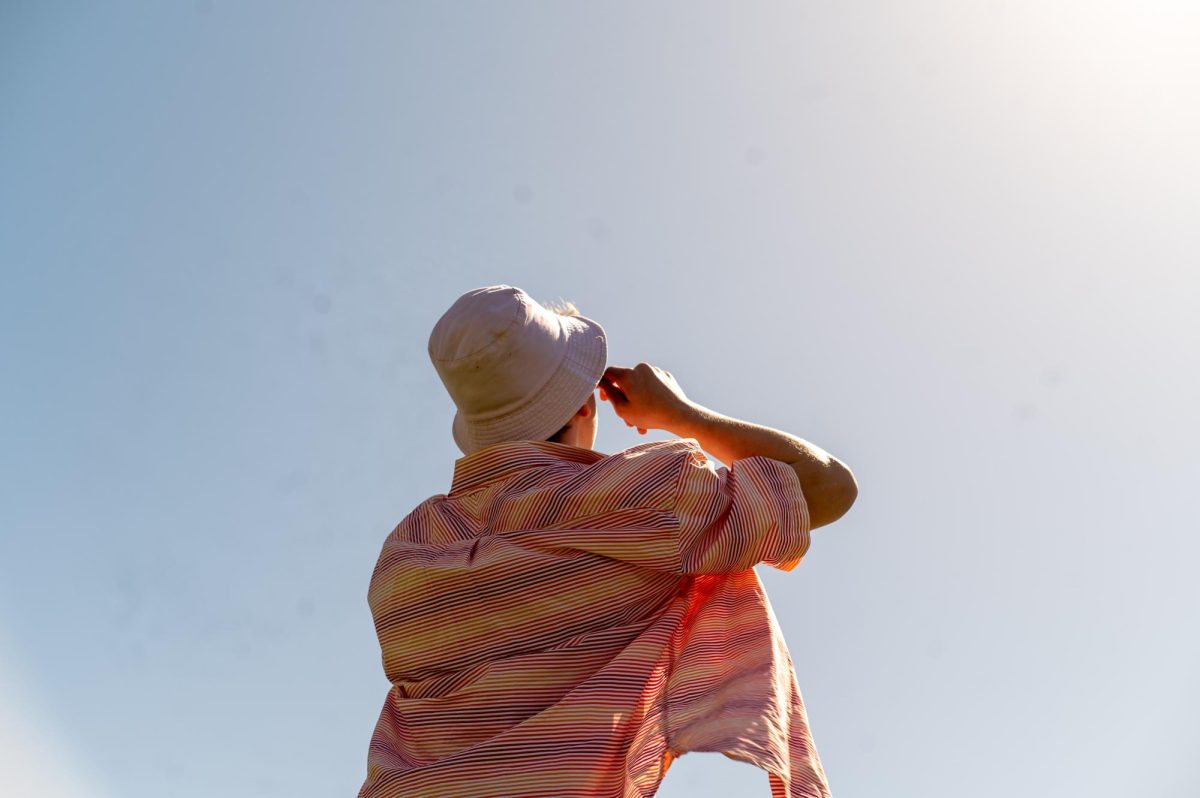

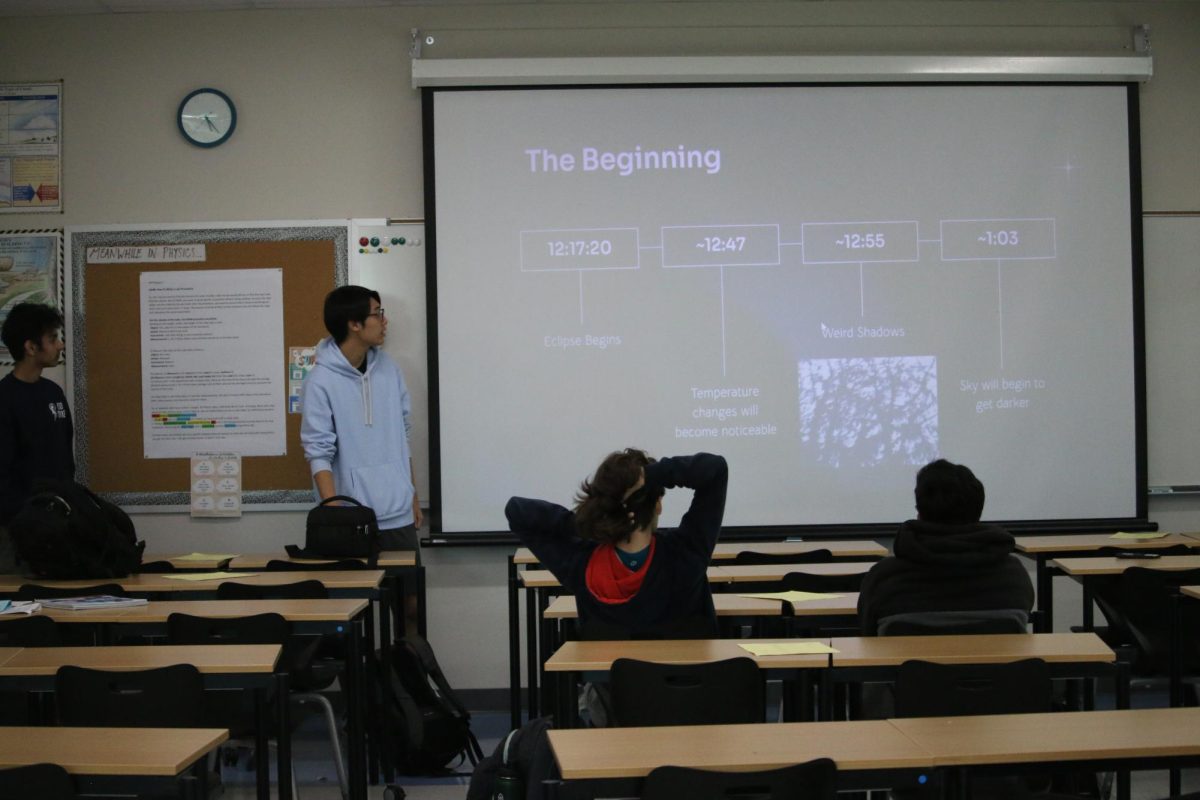
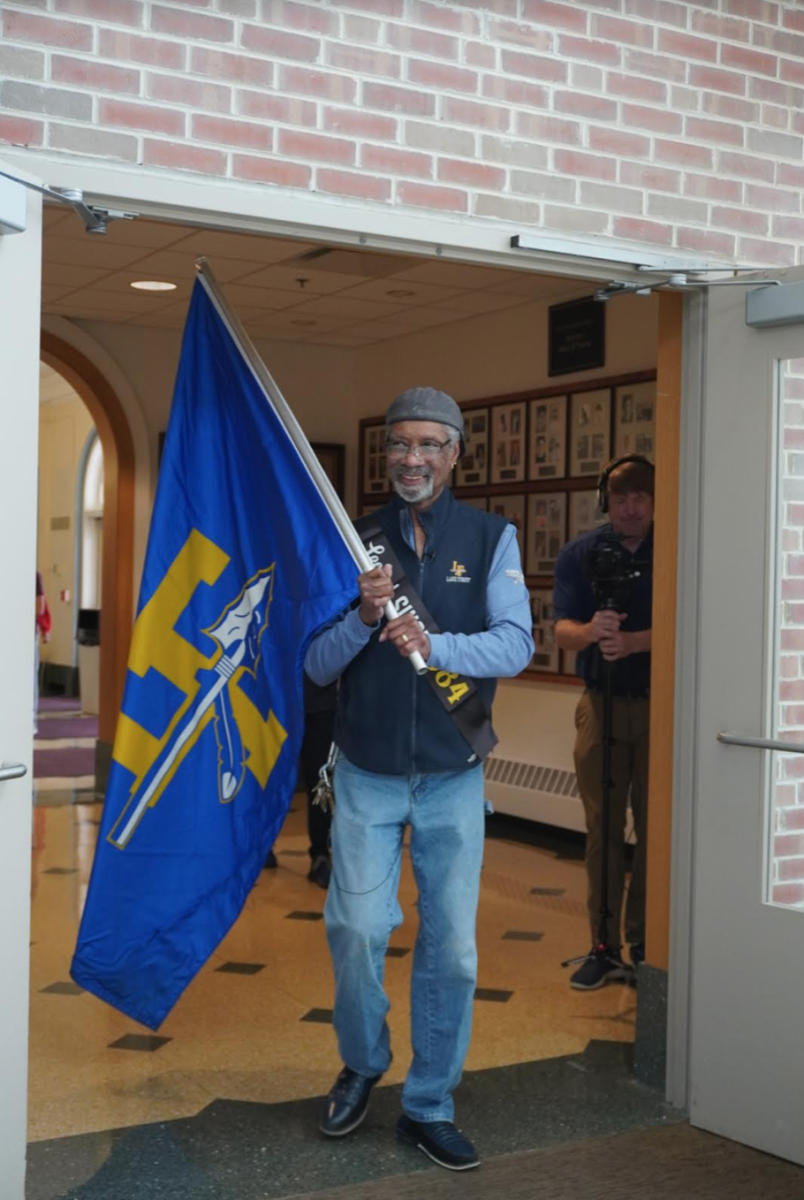
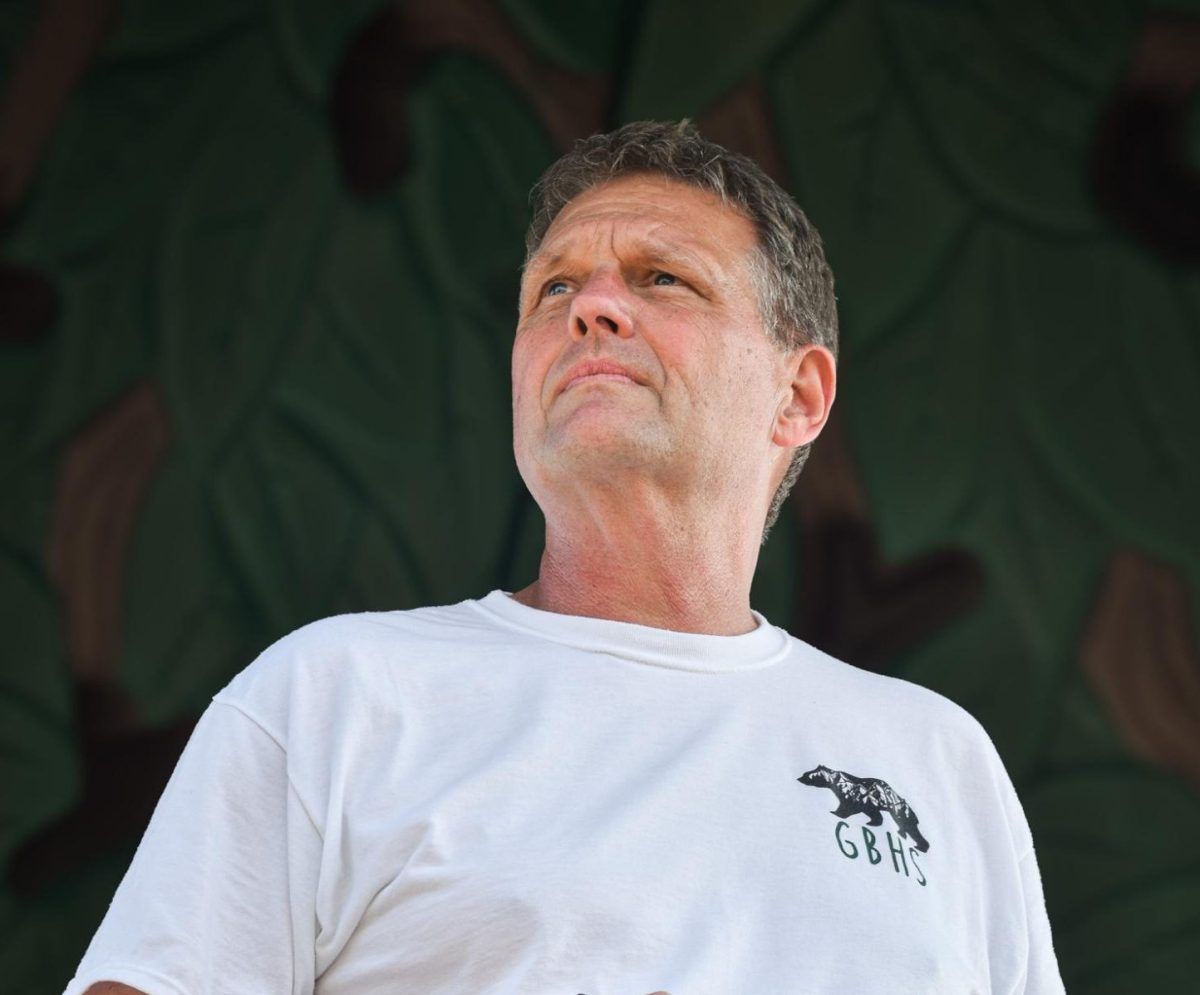




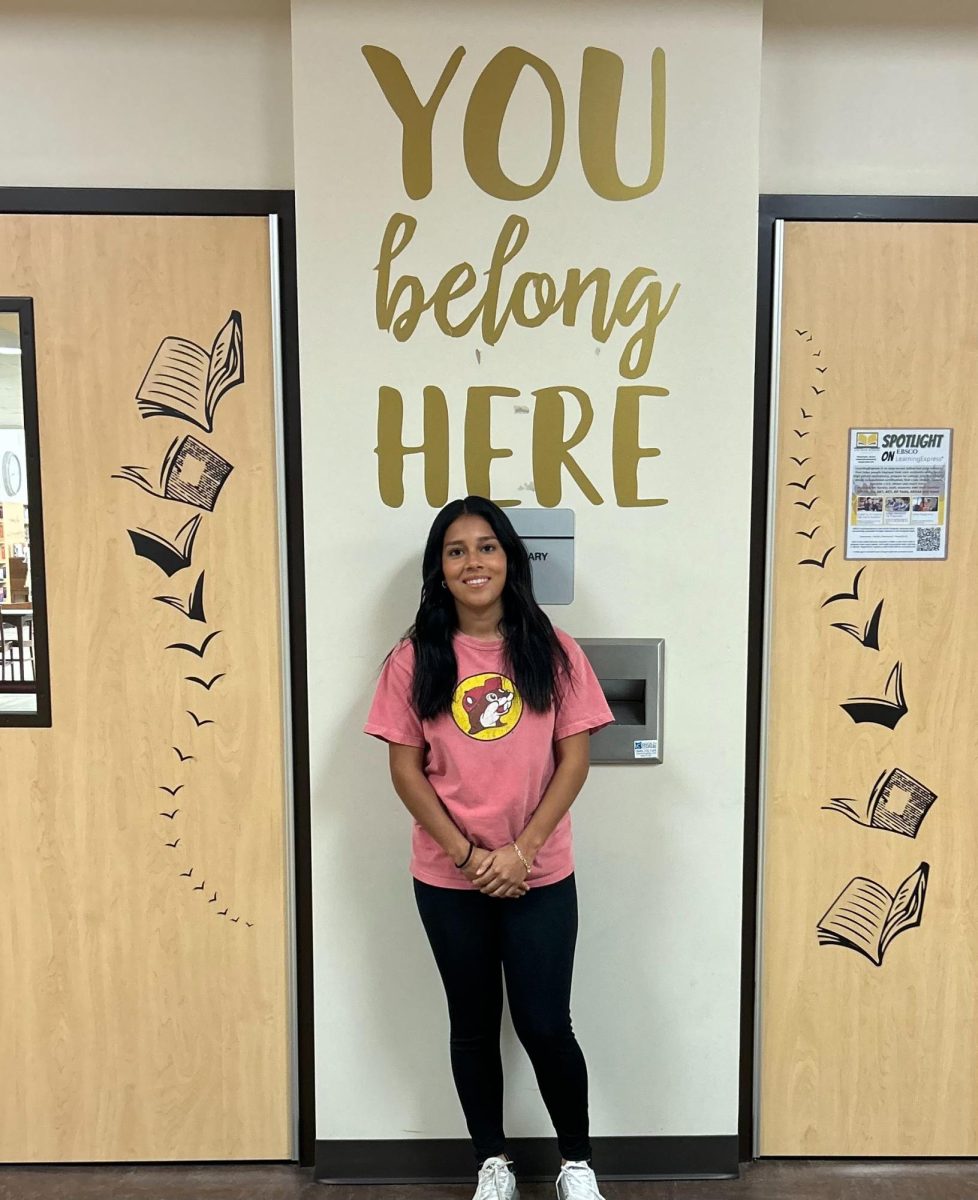















![IN THE SPOTLIGHT: Junior Zalie Mann performs “I Love to Cry at Weddings,” an ensemble piece from the fall musical Sweet Charity, to prospective students during the Fine Arts Showcase on Wednesday, Nov. 8. The showcase is a compilation of performances and demonstrations from each fine arts strand offered at McCallum. This show is put on so that prospective students can see if they are interested in joining an academy or major.
Sweet Charity originally ran the weekends of Sept. 28 and Oct. 8, but made a comeback for the Fine Arts Showcase.
“[Being at the front in the spotlight] is my favorite part of the whole dance, so I was super happy to be on stage performing and smiling at the audience,” Mann said.
Mann performed in both the musical theatre performance and dance excerpt “Ethereal,” a contemporary piece choreographed by the new dance director Terrance Carson, in the showcase. With also being a dance ambassador, Mann got to talk about what MAC dance is, her experience and answer any questions the aspiring arts majors and their parents may have.
Caption by Maya Tackett.](https://bestofsno.com/wp-content/uploads/2024/02/53321803427_47cd17fe70_o-1-1200x800.jpg)
![SPREADING THE JOY: Sophomore Chim Becker poses with sophomores Cozbi Sims and Lou Davidson while manning a table at the Hispanic Heritage treat day during lunch of Sept 28. Becker is a part of the students of color alliance, who put together the activity to raise money for their club.
“It [the stand] was really fun because McCallum has a lot of latino kids,” Becker said. “And I think it was nice that I could share the stuff that I usually just have at home with people who have never tried it before.”
Becker recognizes the importance of celebrating Hispanic heritage at Mac.
“I think its important to celebrate,” Becker said. “Because our culture is awesome and super cool, and everybody should be able to learn about other cultures of the world.”
Caption by JoJo Barnard.](https://bestofsno.com/wp-content/uploads/2024/01/53221601352_4127a81c41_o-1200x675.jpg)



